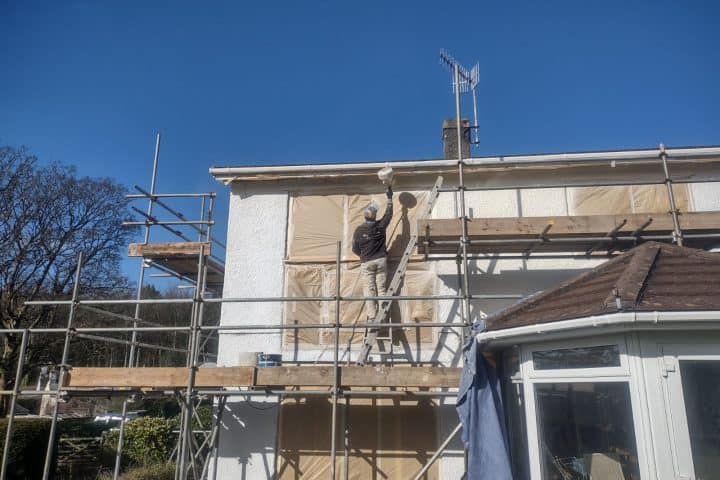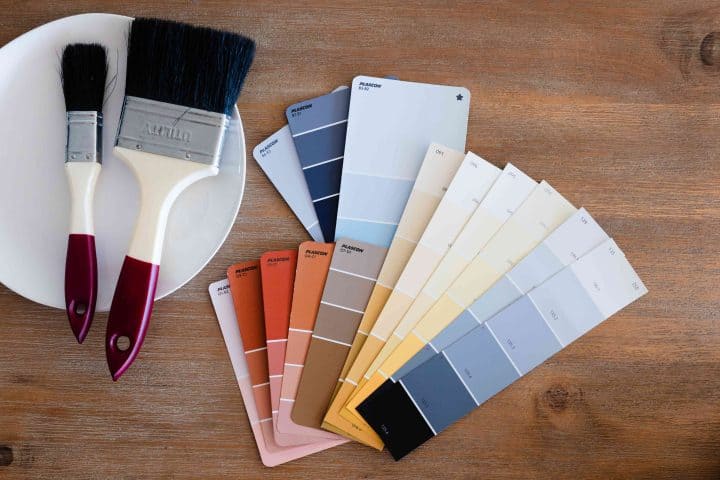Is it time to get your house painted again? That time seems to come around sooner each year, but how often would the optimal time frame be in having your home exterior repainted? After all, you want your house to not only look it’s best, but for it also to remain in good condition, avoiding...Continue reading
Interior Wall Coatings – The Different Types and Their Practical Uses
Interior wall coatings are special paints used inside spaces, primarily walls. Obviously. Their advantages include good coverage, dirt-repellence, glossiness and cleanability. They can be used in rooms, hallways, offices and bathrooms due to their waterproof and non-slip properties. They are not actually paint though, they have various benefits over normal paint, but what are they?Continue reading
How to Fix Hairline Cracks in Rendered Walls
Small hairline cracks in exterior house walls usually don’t cause major structural issues and can usually be easily sealed, although that has to be done correctly or the cracks will reappear. However, larger cracks may indicate serious structural issues and require immediate attention.
The Dangers of Asbestos in Buildings and What to Look Out For
When I first started working with exterior wall coatings it was way back in 1986. That seems such a long time ago, and was! Little did I know that as a naïve teenager, working with my late father, I was handling asbestos. Yes, up until 1986, asbestos was commonly found in exterior wall coatings, albeit...Continue reading
What is the Most Effective Solution For Rising Damp in Buildings?
Rising damp is one of the most prevalent and problematic forms of damp in buildings, as well as being an expensive issue to resolve. Rising damp is often an issue in brick and masonry walls due to moisture seeping upwards through capillaries – tiny tubes that penetrate the wall material.
What is the Best Way to Damp Proof a Wall?
If damp is taking over your home, it’s essential that you take action quickly. Not only is damp an eyesore but it can have detrimental effects on your health as well, leading to respiratory conditions and worsening allergy symptoms.
What Are the Reasons For Wall Dampness?
House walls can become damp for a variety of reasons. If left untreated, this can lead to major issues like peeling paint, stains, and mould growth. There are several steps that can be taken to remedy the situation. The initial step is identifying and correcting the source of the issue.
How to Get Rid of Damp Walls and the Damp Patches in Your House
Dampness in a house is an issue that can impact both old and new properties alike. Left untreated, dampness can lead to the growth of mildew and mould. This can be detrimental for those living there, especially those suffering from breathing issues. It is a frequent source of irritants and allergens which could contribute to...Continue reading
How Can a House Be Protected From Dampness and Mould?
We all understand the dangers of damp and mould in homes. Not only is it bad for your health, but it can lead to costly repairs if left unchecked. To prevent damp and mould growth in your home, it is essential to take steps to secure it from entering. The primary culprit behind these problems...Continue reading
A house exterior makeover; before and after in Ivybridge, South Devon
If you live in a pebbledashed house there comes a time where you just simply get sick of the sight of it. After all, it may be maintenance free but it looks awful. What if you could have a maintenance free exterior but the house looks great from the outside? I’m pleased to tell you...Continue reading
What is the Difference Between Spar Dash and Pebbledash Wall Coatings?
What’s the difference between spar dash and pebbledash wall coatings? Both exterior wall coverings are popular options for protecting walls but they are not to everyone’s taste. Is your home pebbledashed and you hate the look of it? Each of these wall coatings has their drawbacks as well as advantages. For instance, each can be...Continue reading
What is the Difference Between Plastering and Rendering?
As contractors we sometimes get asked to “plaster an external wall” but far from us wanting to correct and admonish our customers for using the wrong terminology, we thought we would highlight the basics and the differences between plastering and rendering. Plastering and rendering are two construction techniques commonly employed to achieve a flat and...Continue reading



